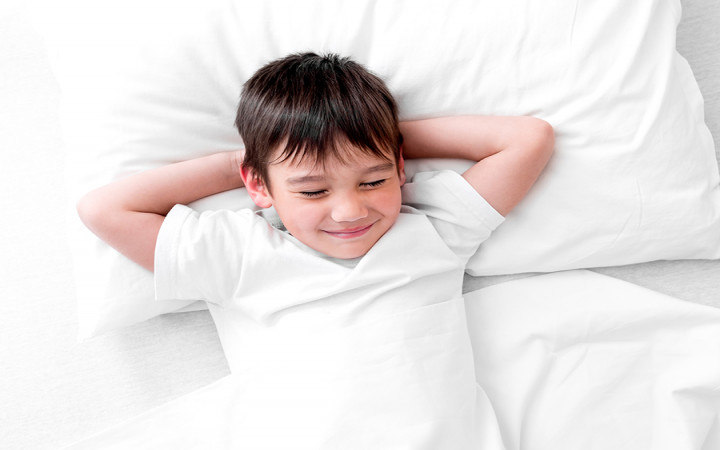Today’s Wonder of the Day was inspired by Ashlyn. Ashlyn Wonders, “Why are there diffrent types of pillows?” Thanks for WONDERing with us, Ashlyn!
Have you ever tried to fall asleep on a warm evening? After playing basketball with your friends all evening, you finally come inside, have a late snack, and then retreat to your room for bedtime.
You're plenty tired from the day's activities, but you can't seem to fall asleep. You lie on your bed, staring at the ceiling. You toss. You turn. You count sheep. Still, sleep eludes you. Eventually, you realize you're too warm to fall asleep.
You turn onto your side and then sit up as you flip over your pillow. As you lay your head back down, you feel the blessed coolness of the other side of the pillow. As you enjoy the refreshing feeling of cool cotton against your cheek, you finally drift off into a sound slumber.
If any of that sounds familiar, you're not alone. Many people have trouble sleeping when it's too warm. And there's certainly some truth to the other side of the pillow always being cooler. As it turns out, science can help us understand why temperature has a strong impact on how well we sleep.
According to scientists, your head radiates more heat than any other part of your body. Thus, it's no surprise that your pillow heats up quickly as it absorbs heat from your head when you lie down.
Most pillows are made of materials that do not conduct heat very well. As a result, the side of the pillow against your head soaks up and retains heat from your head.
The other side of the pillow stays about the same temperature as the ambient temperature in your room, which is probably 20-30 degrees cooler than your head. That's why the other side of the pillow always feels cooler.
Several manufacturers now make special pillows that use a variety of technologies to attempt to keep your head cooler throughout the night without repeatedly flipping your pillow over. Some use special materials that help to conduct heat away from your head, while others use special gels that maintain a cooler temperature.
If you want to get the best night's sleep possible, you might need to check your thermostat. Researchers have determined that the temperature in your bedroom should be between 60˚ F and 67˚ F for optimal sleep.
That's probably cooler than you keep the house in the summer and warmer than you keep it in winter. If you have trouble sleeping, though, adjusting the thermostat before bed can make a big difference.
When you go to bed, your body tries to decrease its temperature in order to induce sleep. If it's too warm, it can be difficult to get to sleep and to stay asleep. Keeping it cooler in your bedroom helps your body's natural processes during sleep.
Sleep experts recommend thinking of your bedroom as a cave: it should be dark, cool, and quiet. Light, heat, and noise tend to interrupt sleep, which can have a variety of negative health effects.
Keeping your bedroom cool may have other positive health effects beyond sleeping better. Studies have shown that sleeping at cooler temperatures can help to decrease your risk of particular metabolic diseases, like diabetes. Cooler temperatures also boost the body's production and release of melatonin and growth hormone, which can help you look and feel younger.











Sleepy ted
Kennedy
Evelyn
im a te rex
Kayla
dezmond
jace
luke
Jaxon
Krishan
sarah
kolton
Addy
Kendl
Chase
Collin
Liahm
Owen
Elisabeth
stella
Tyler
mason
iris
Samuel
Ella
chloe
Braeden
Mia
Mia
hi
george